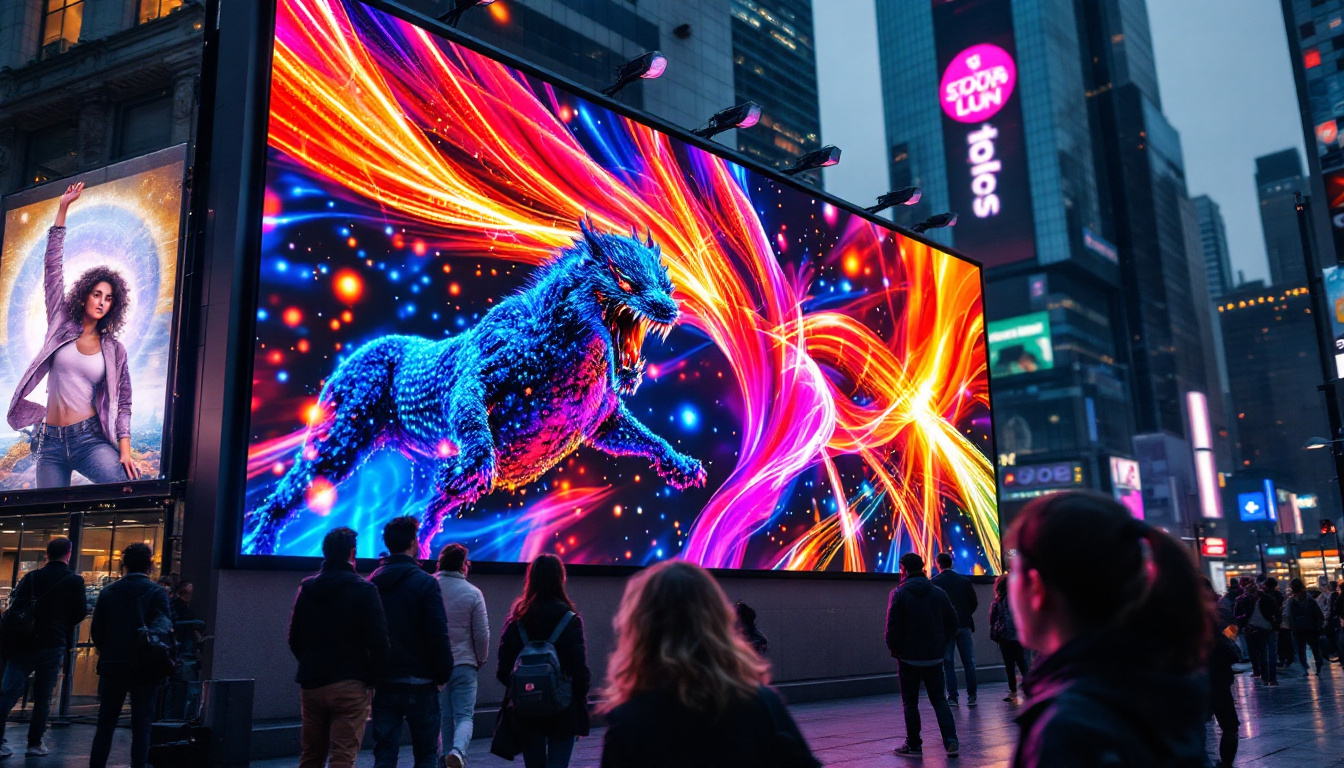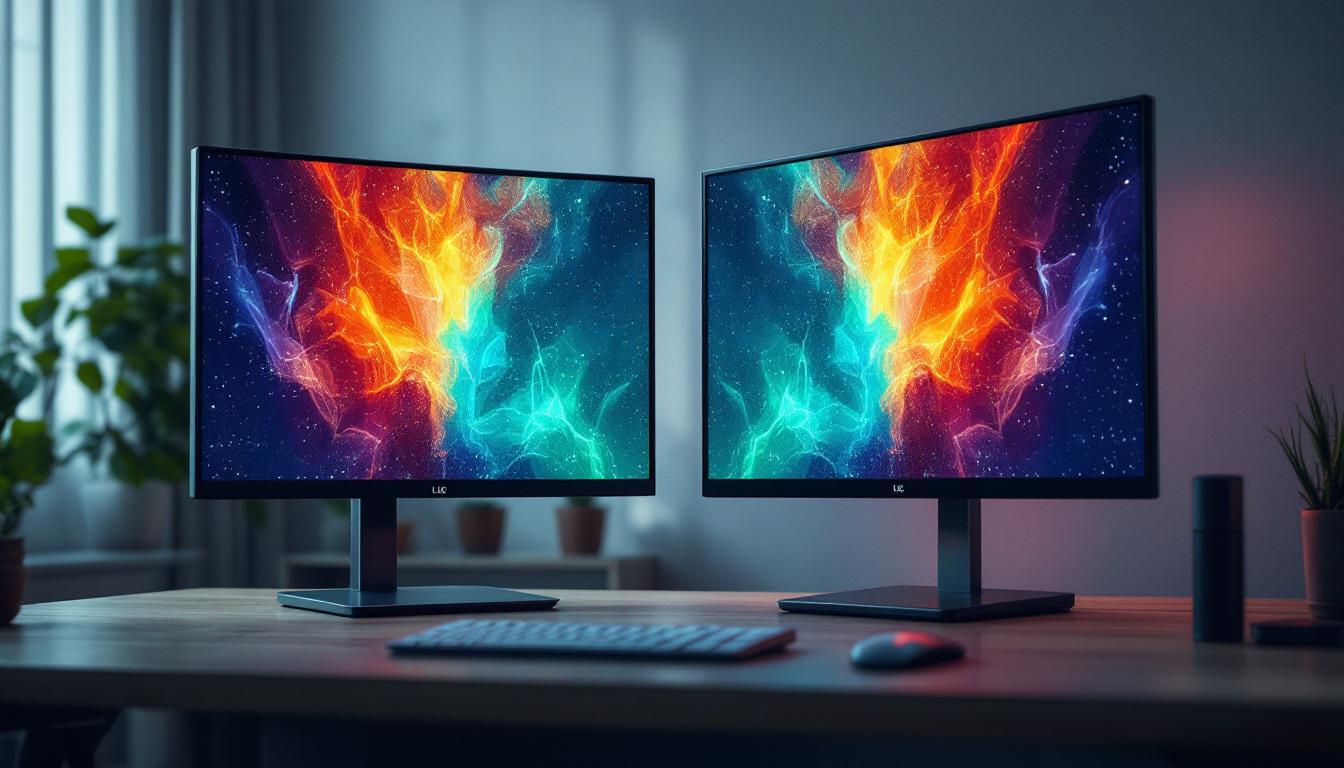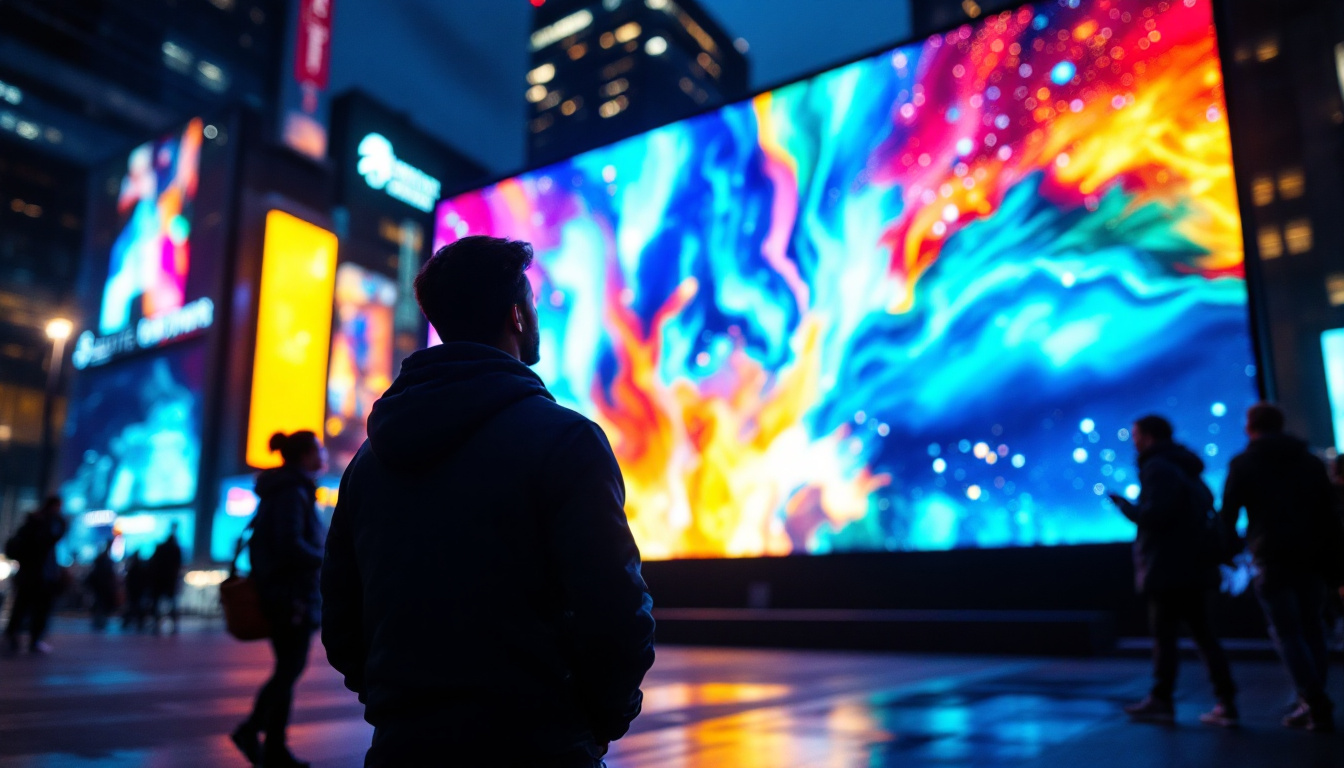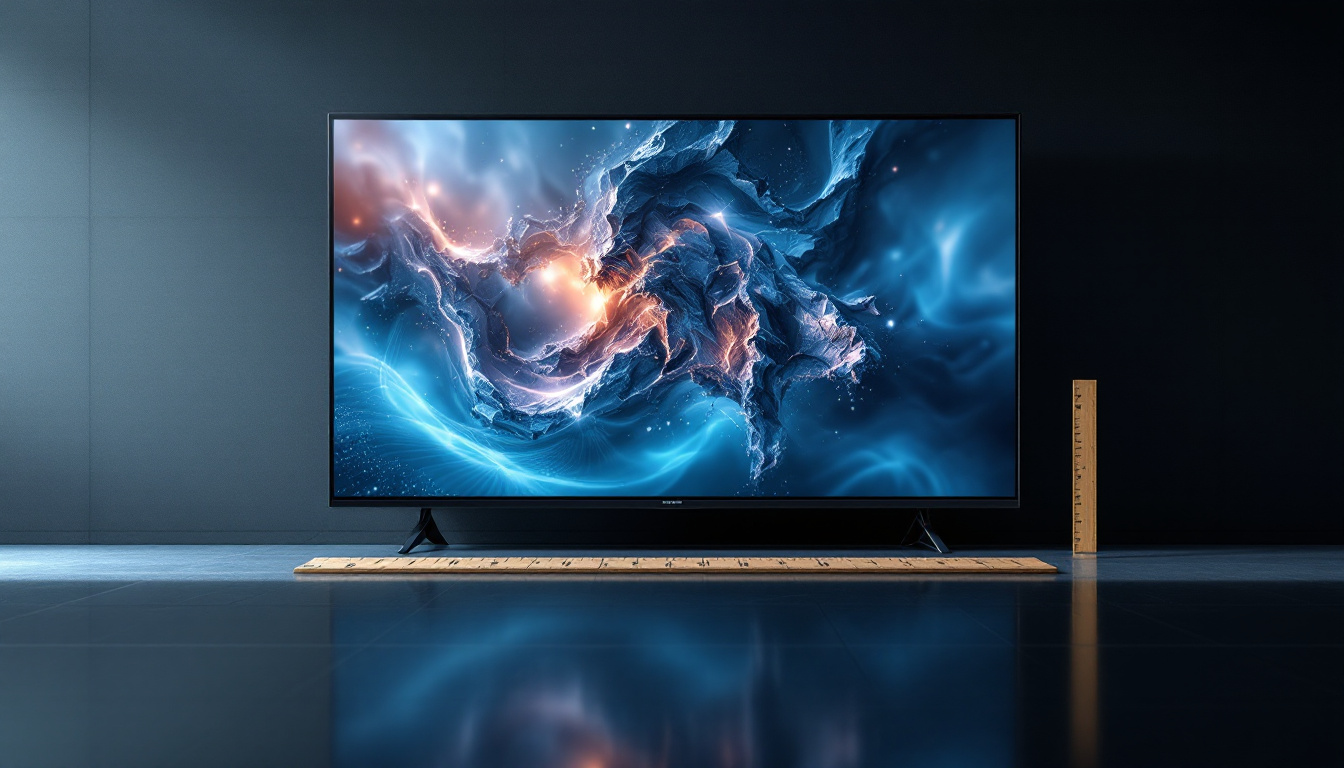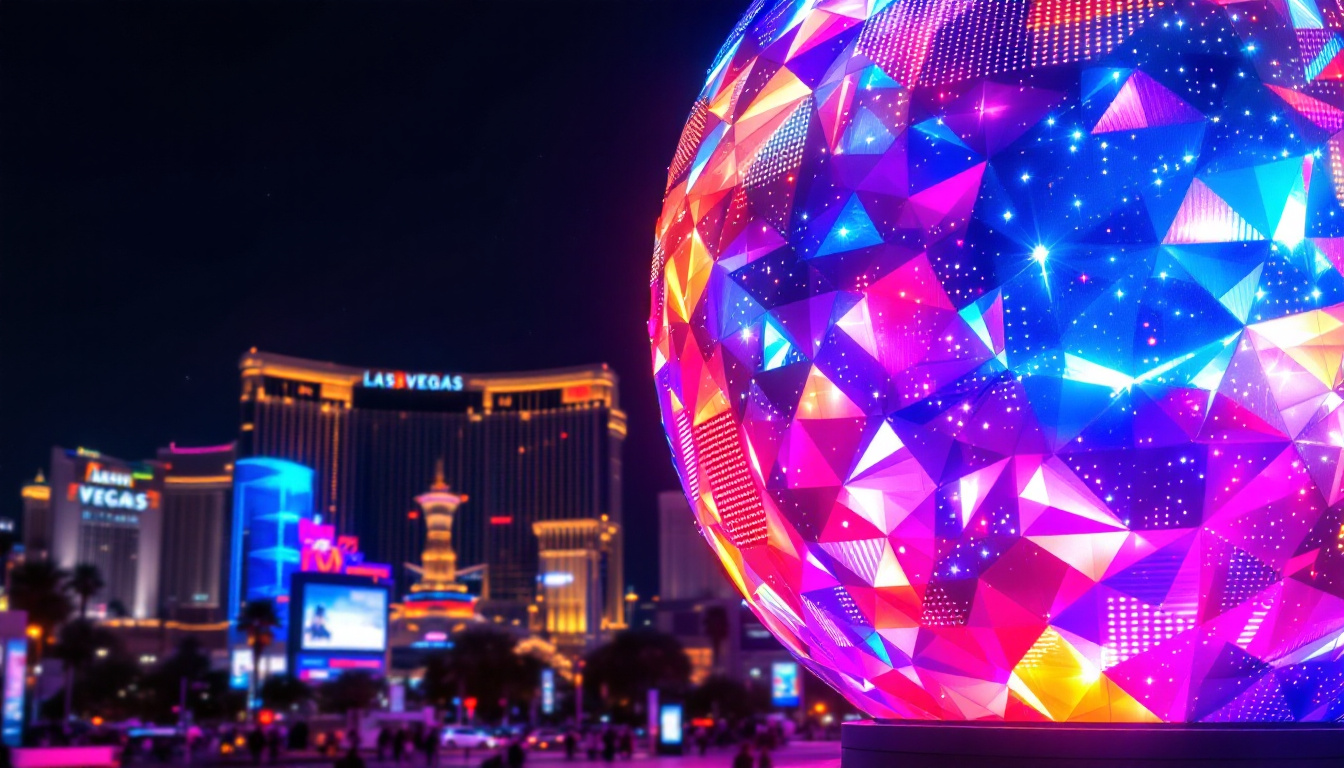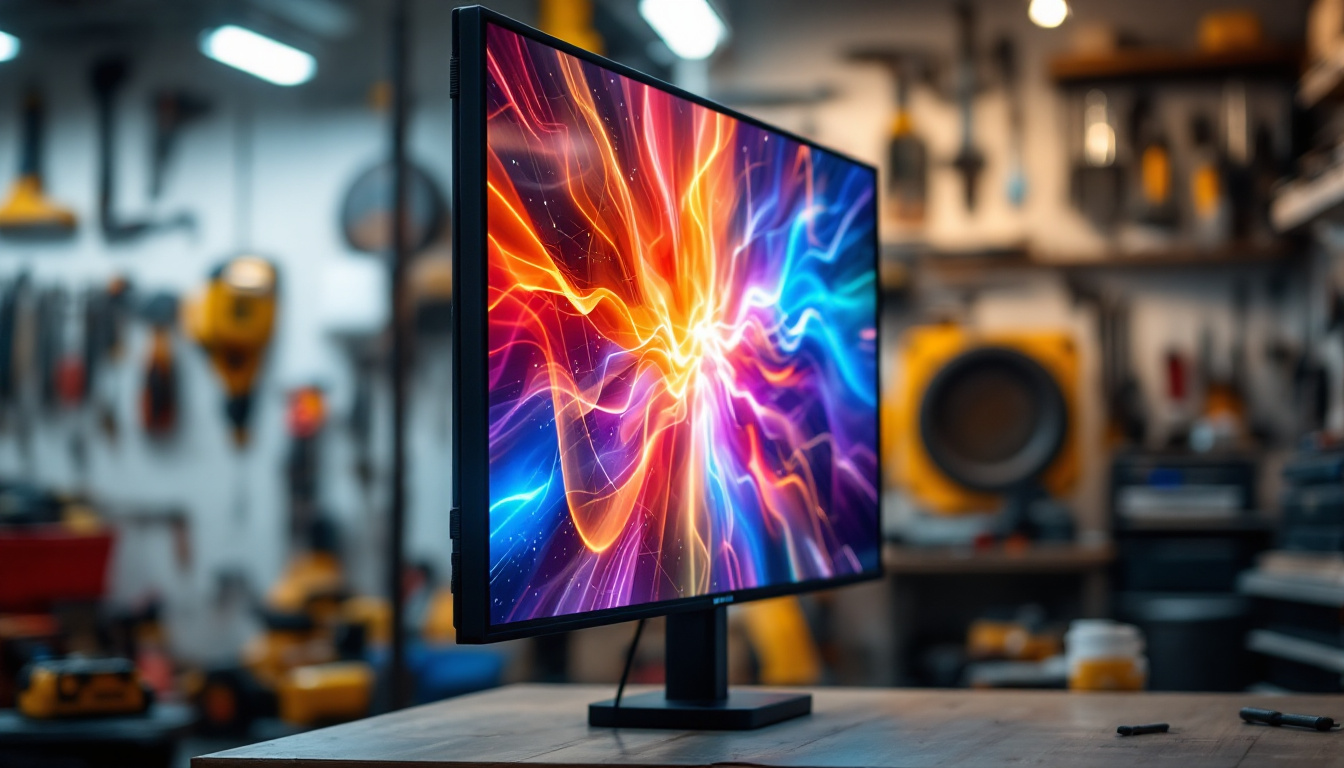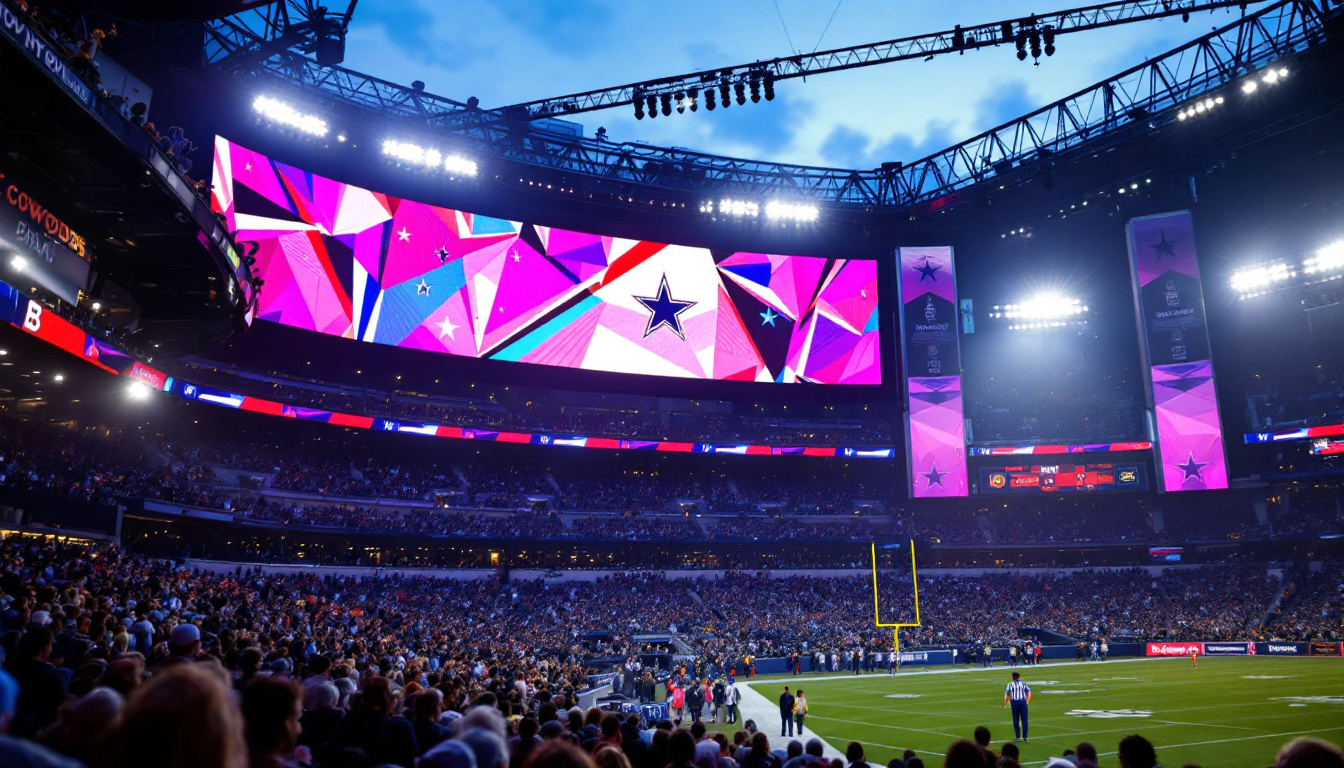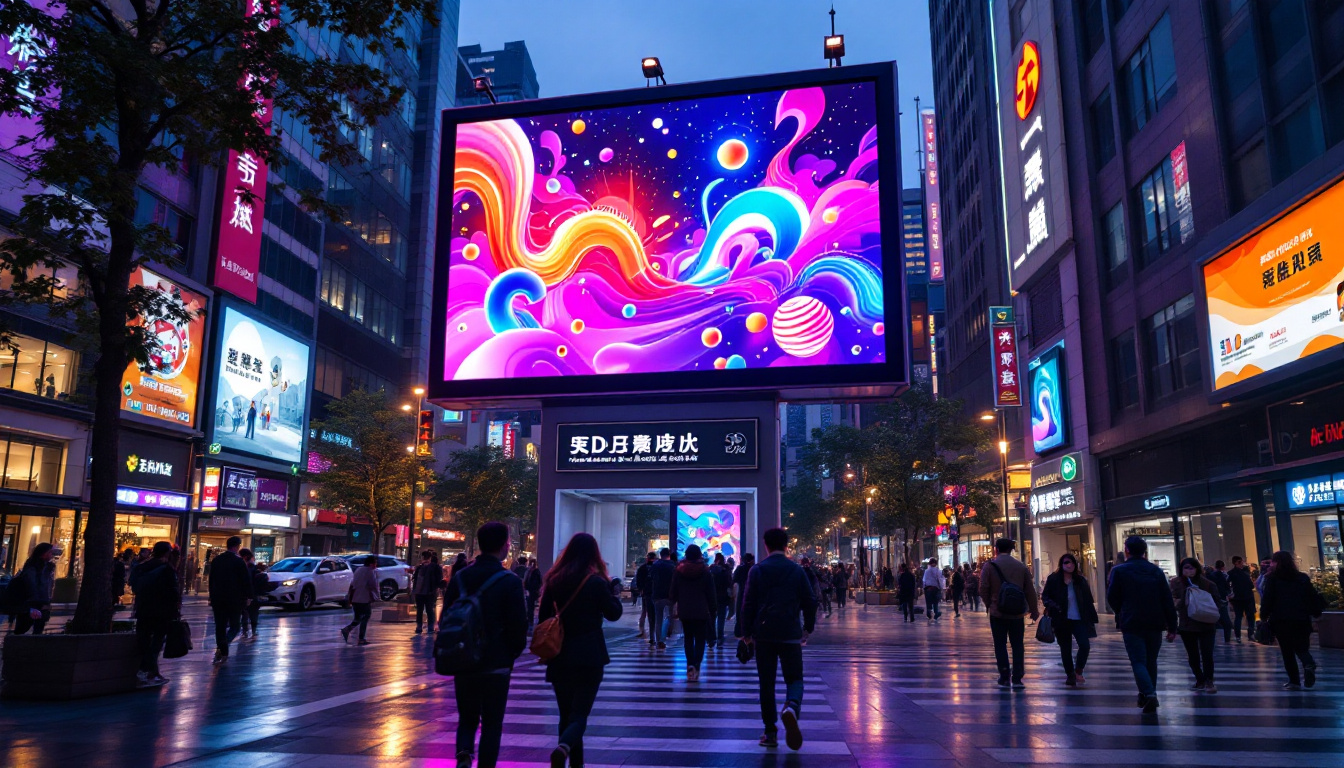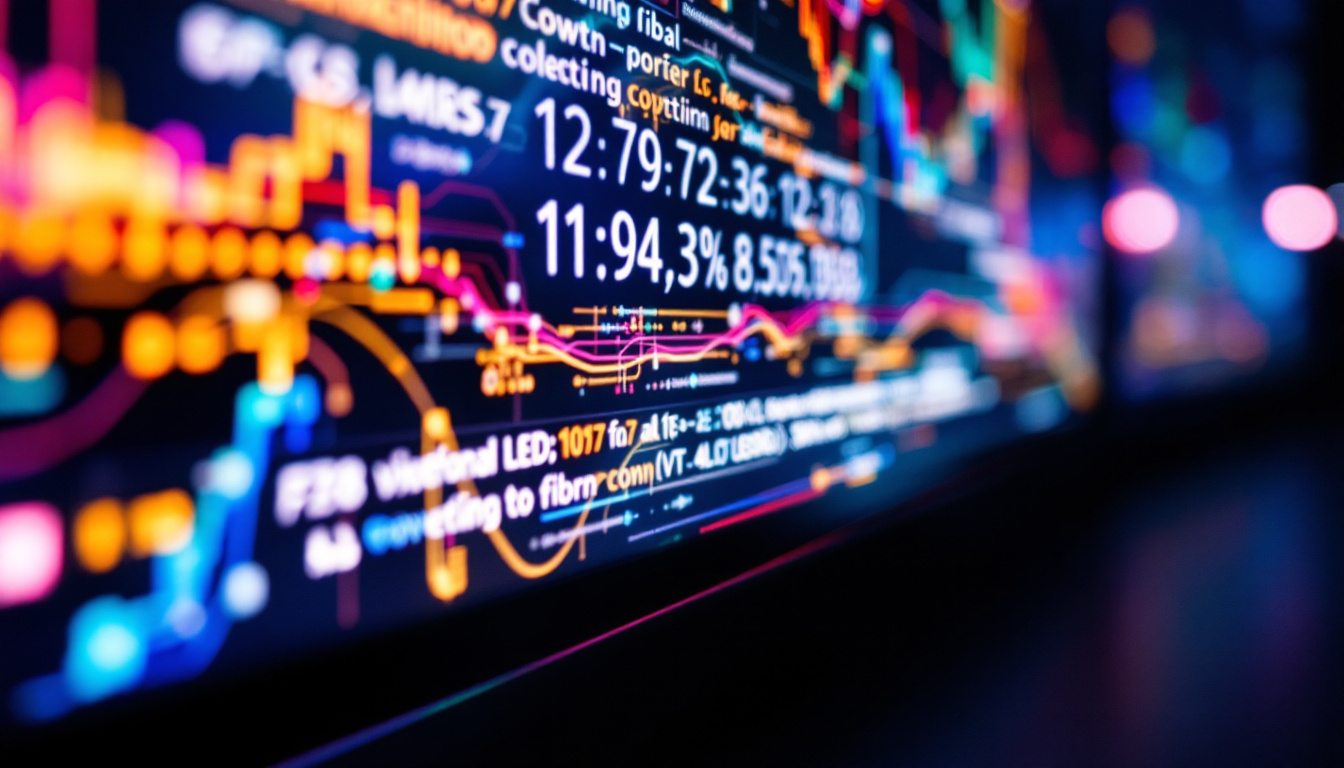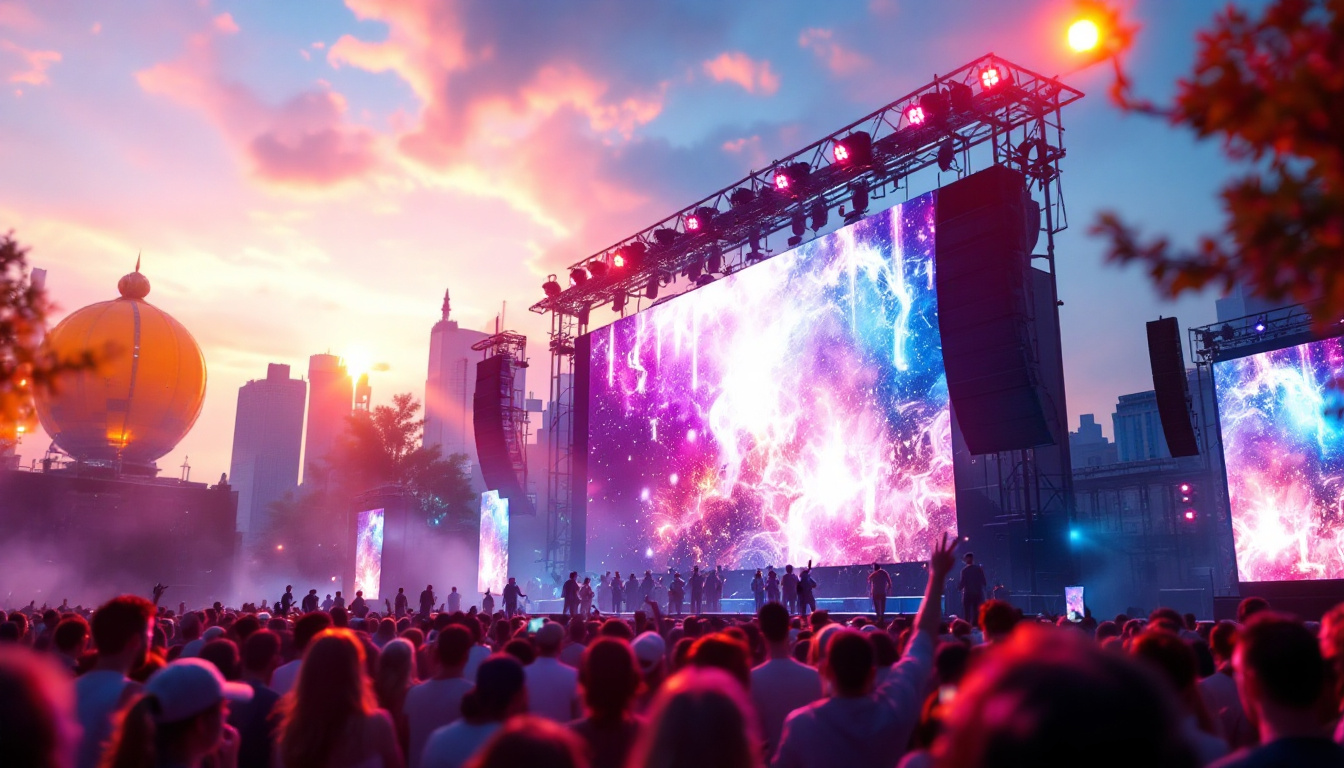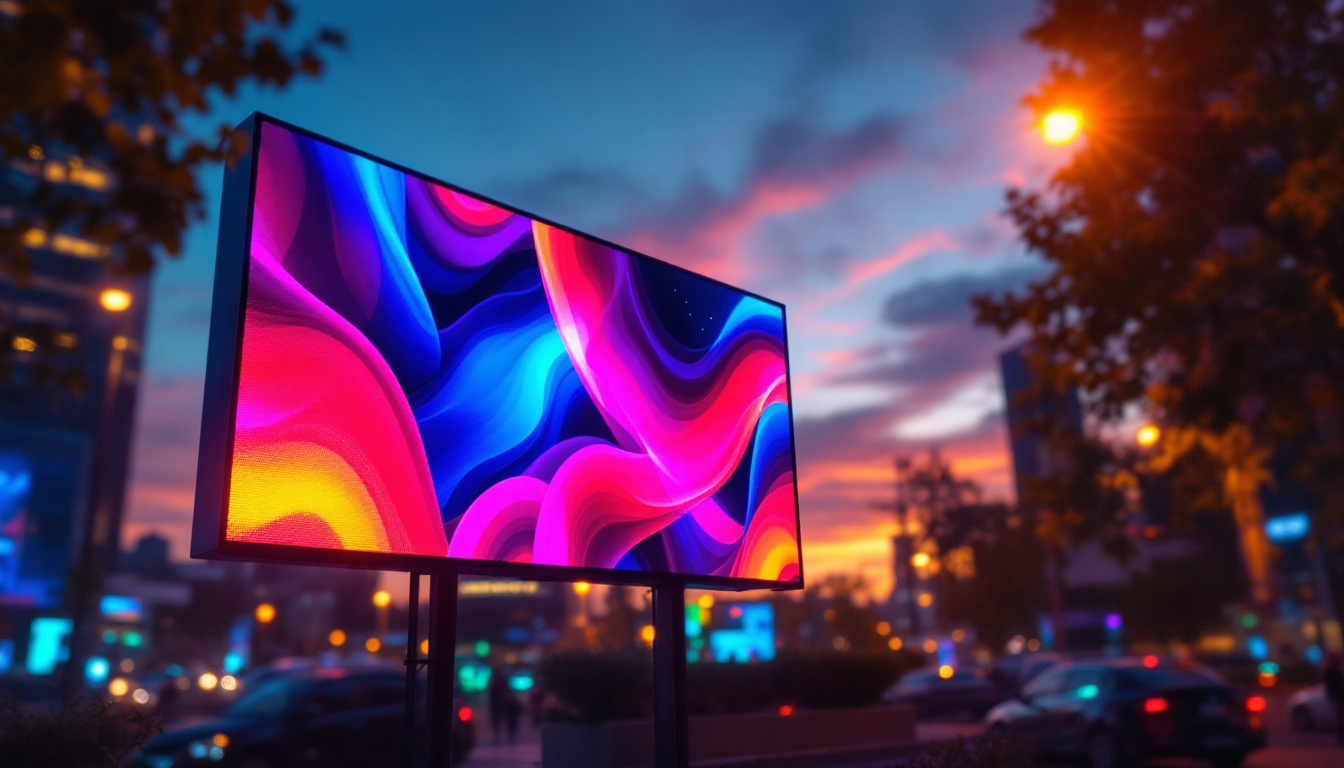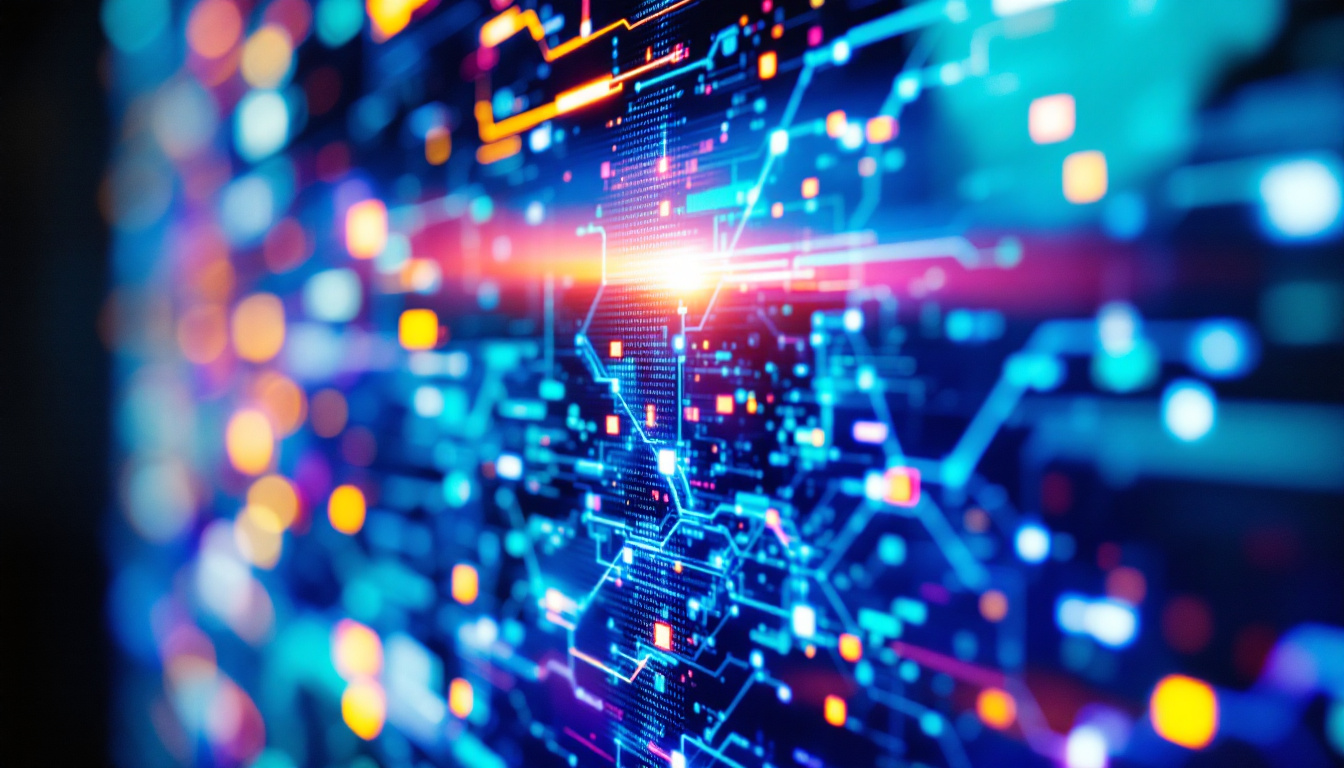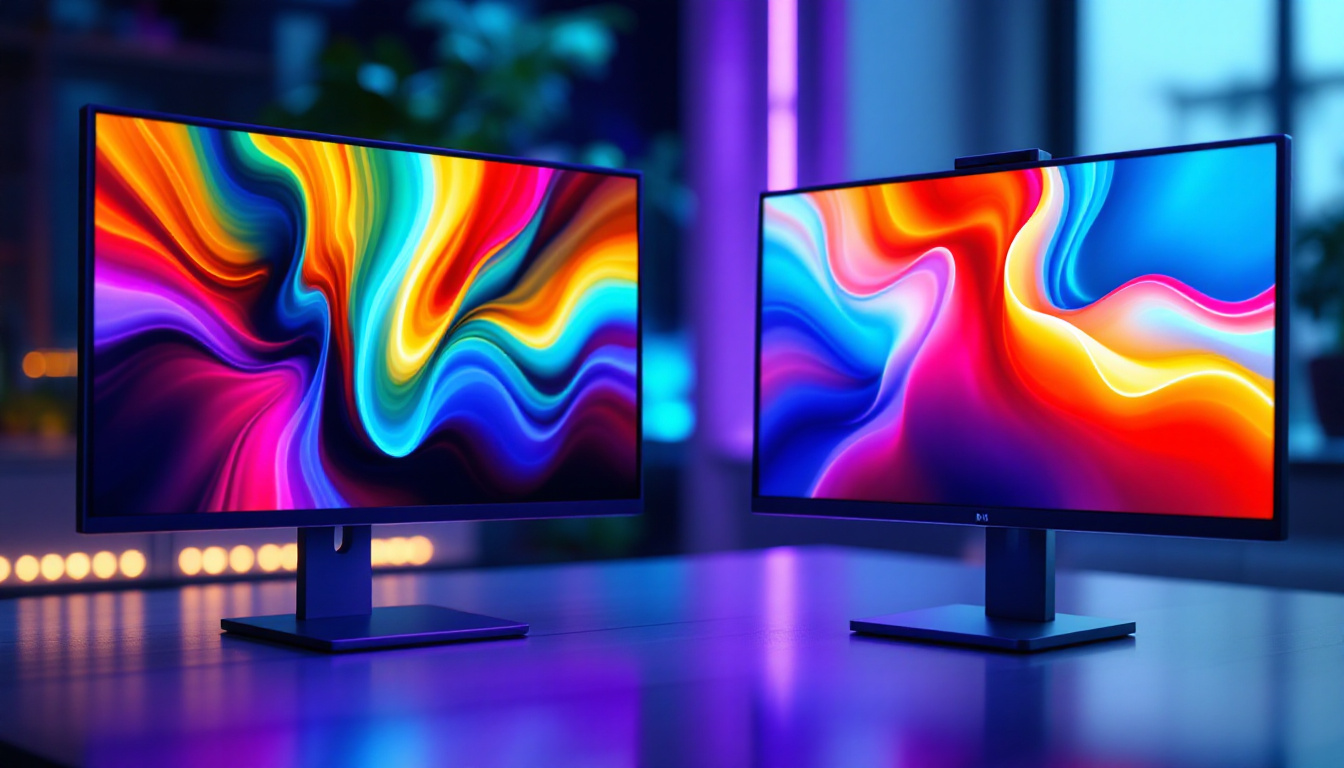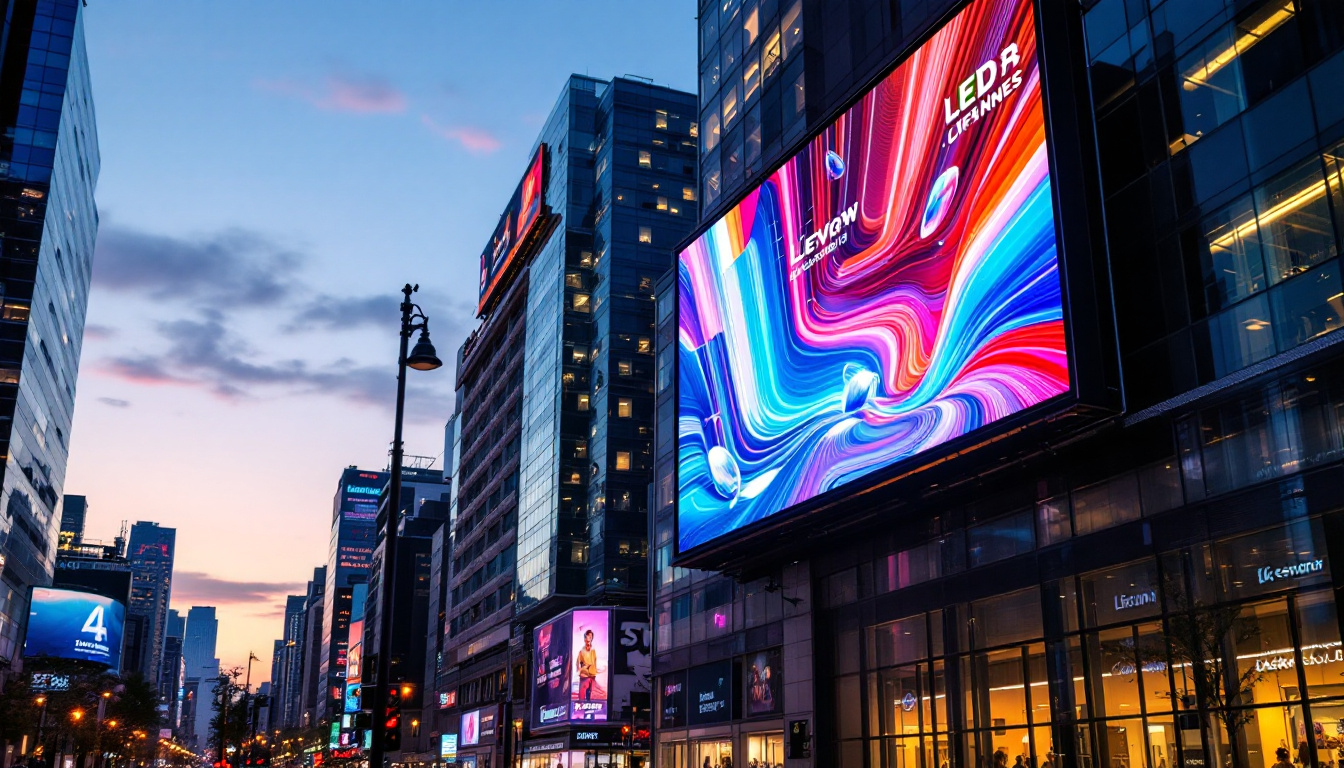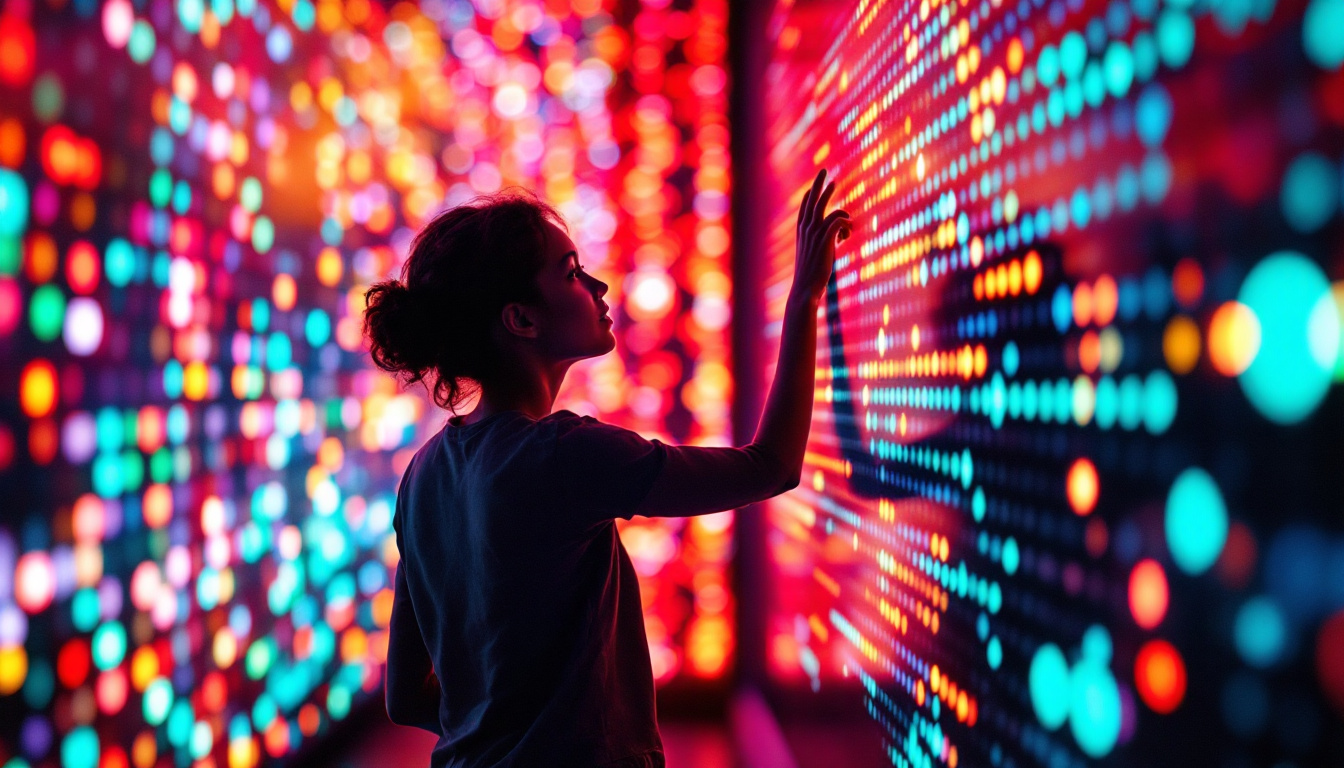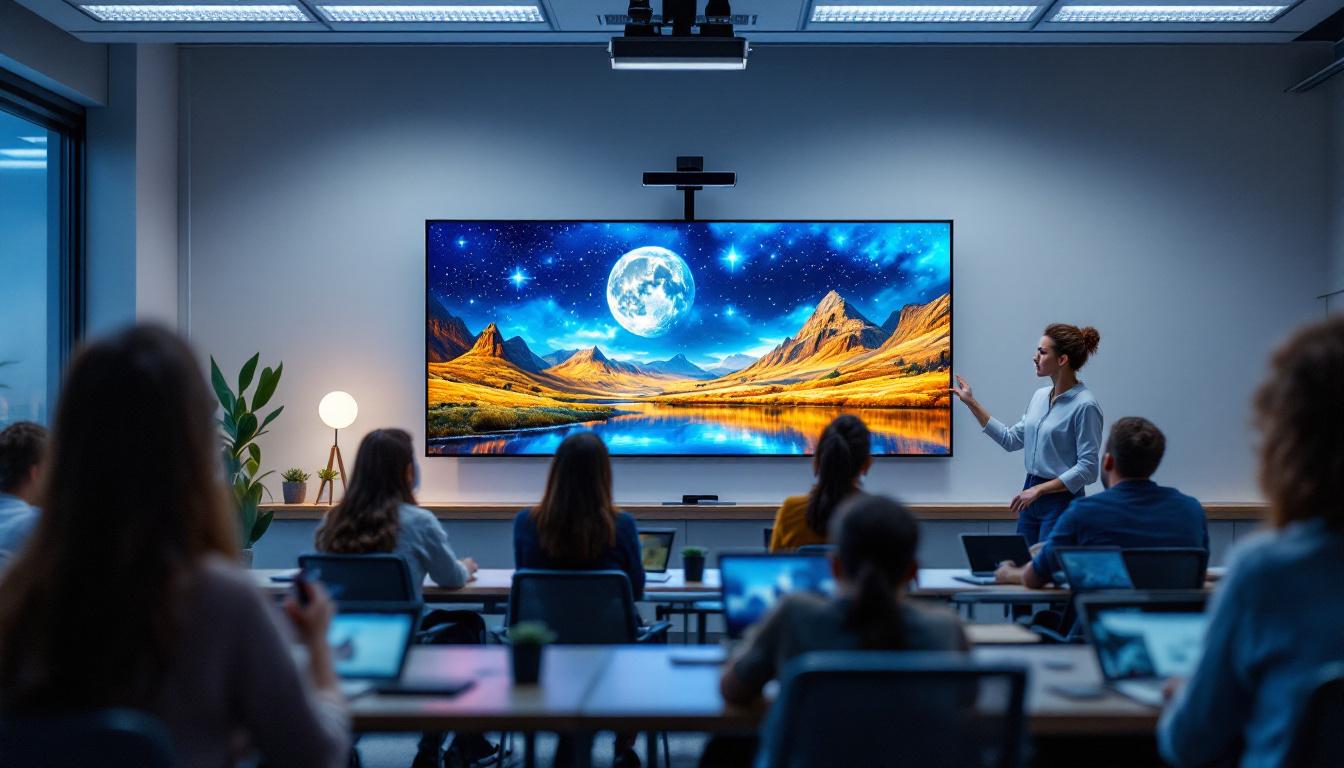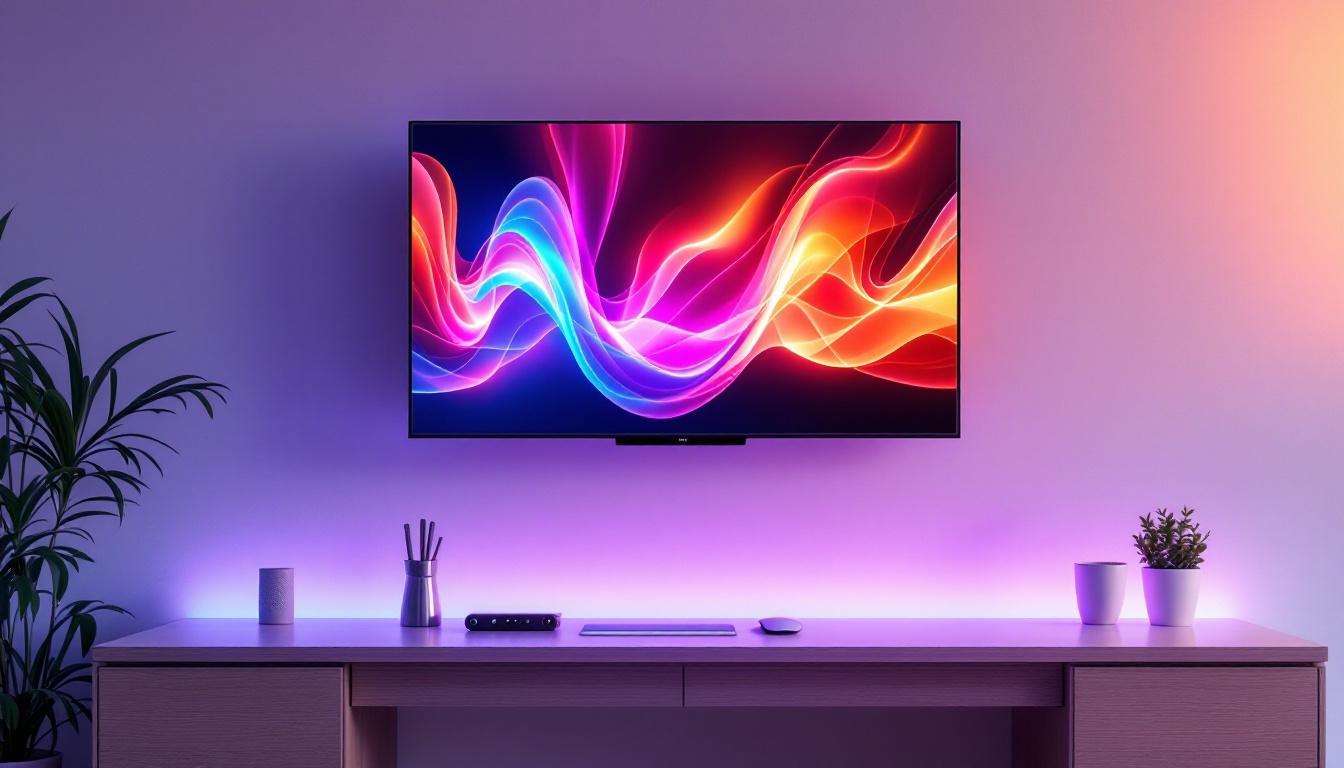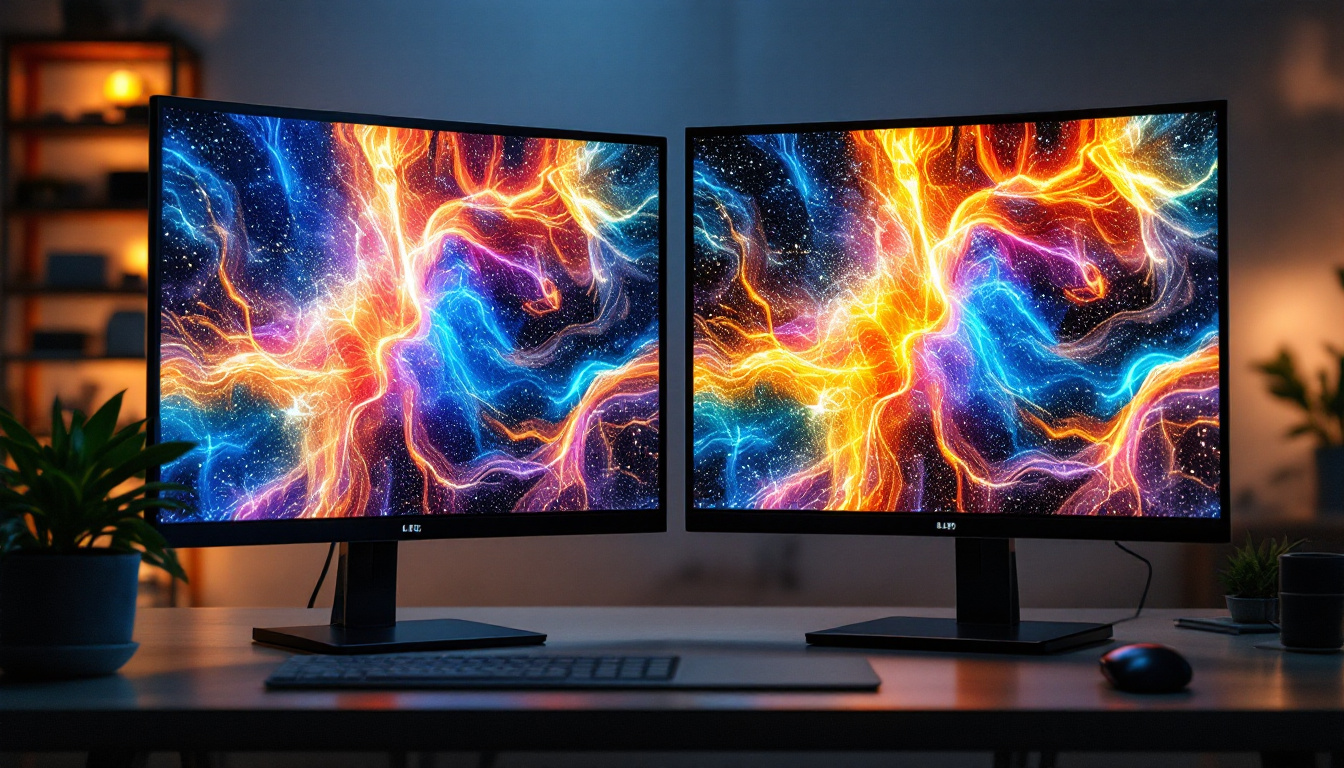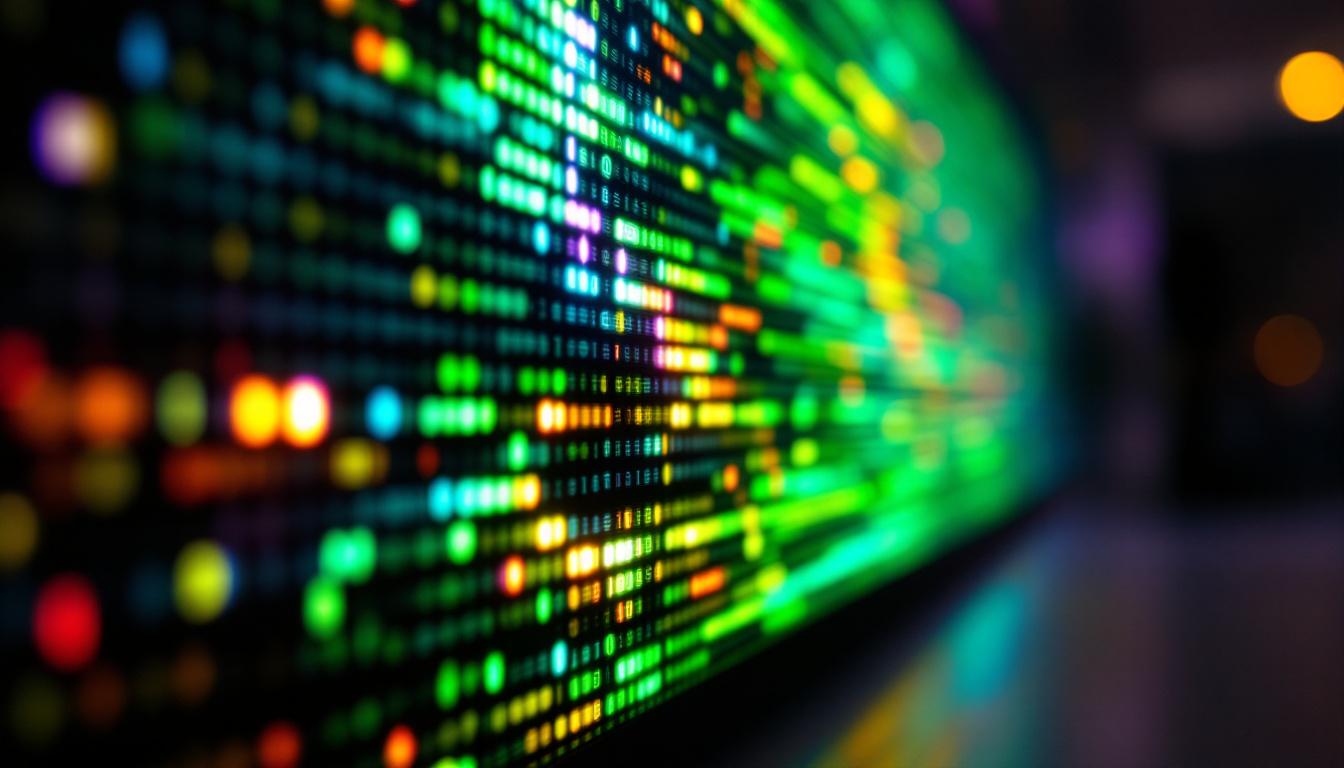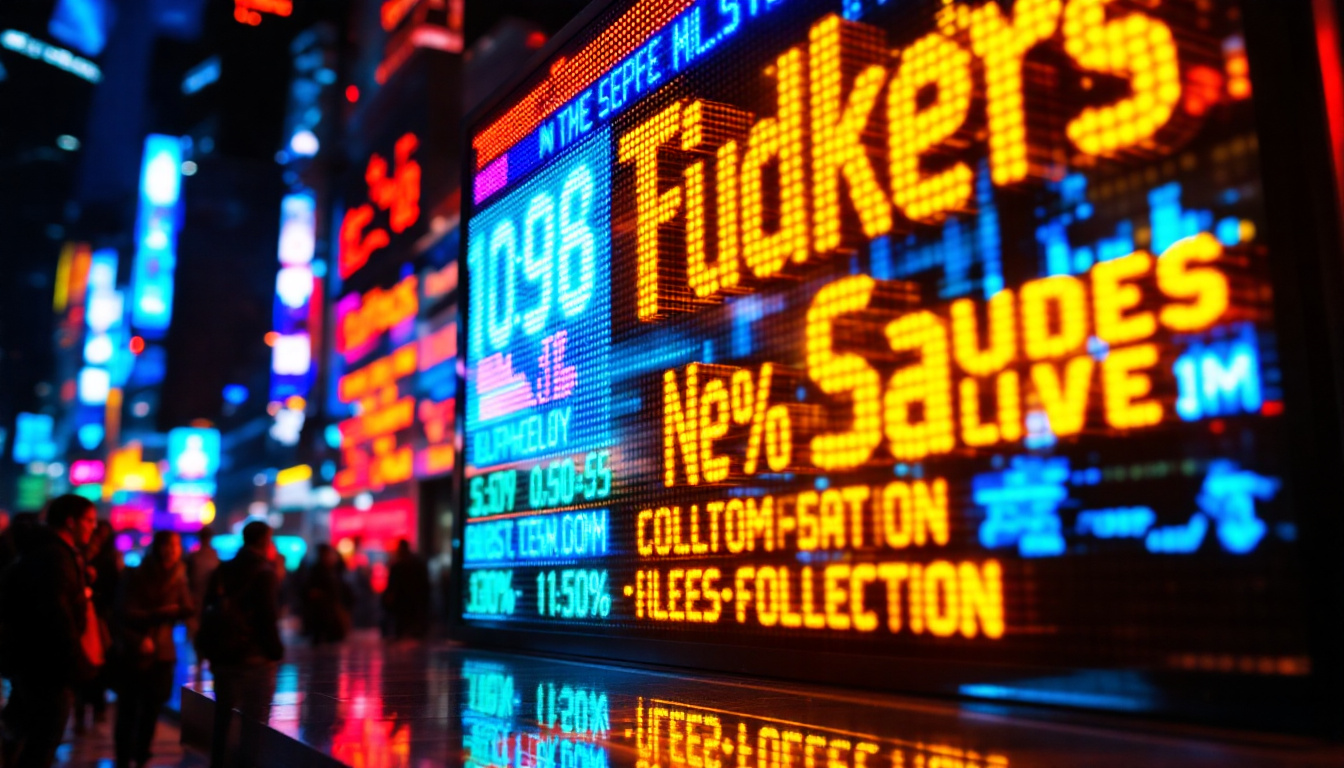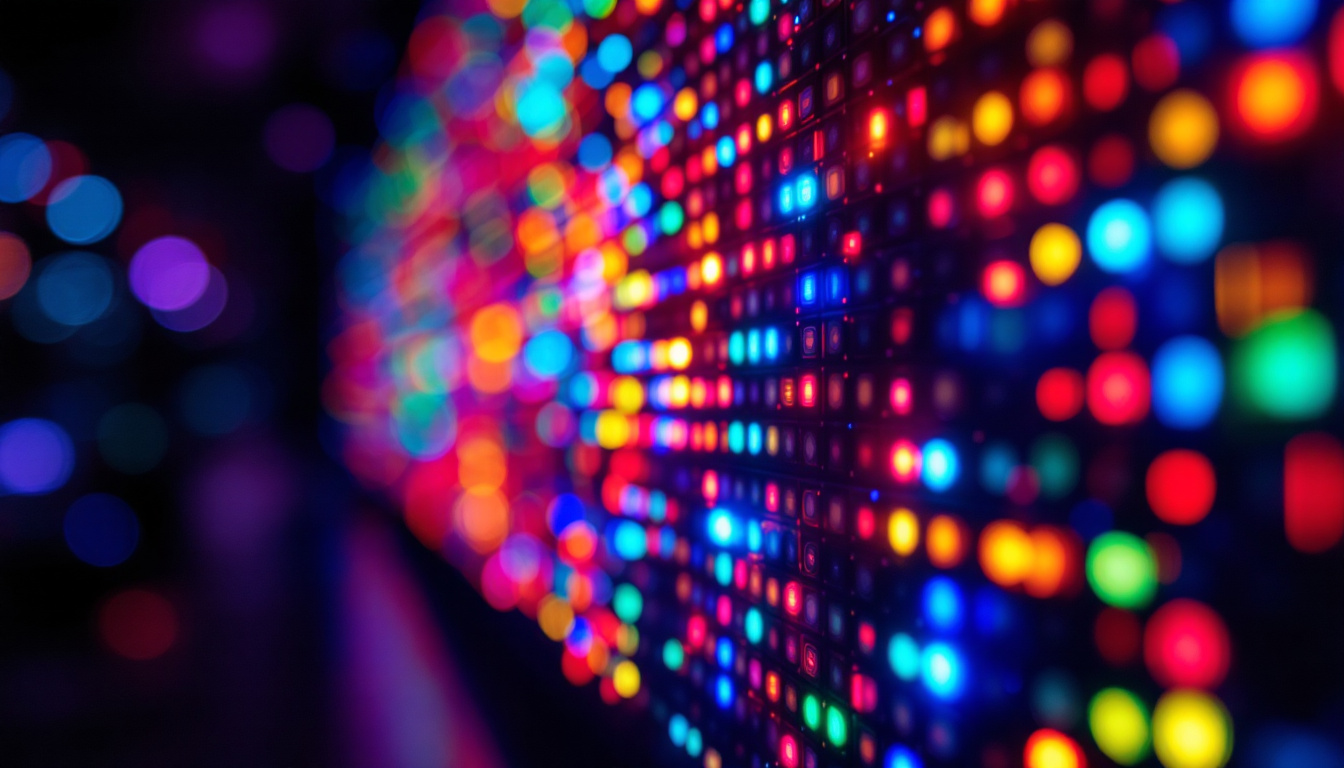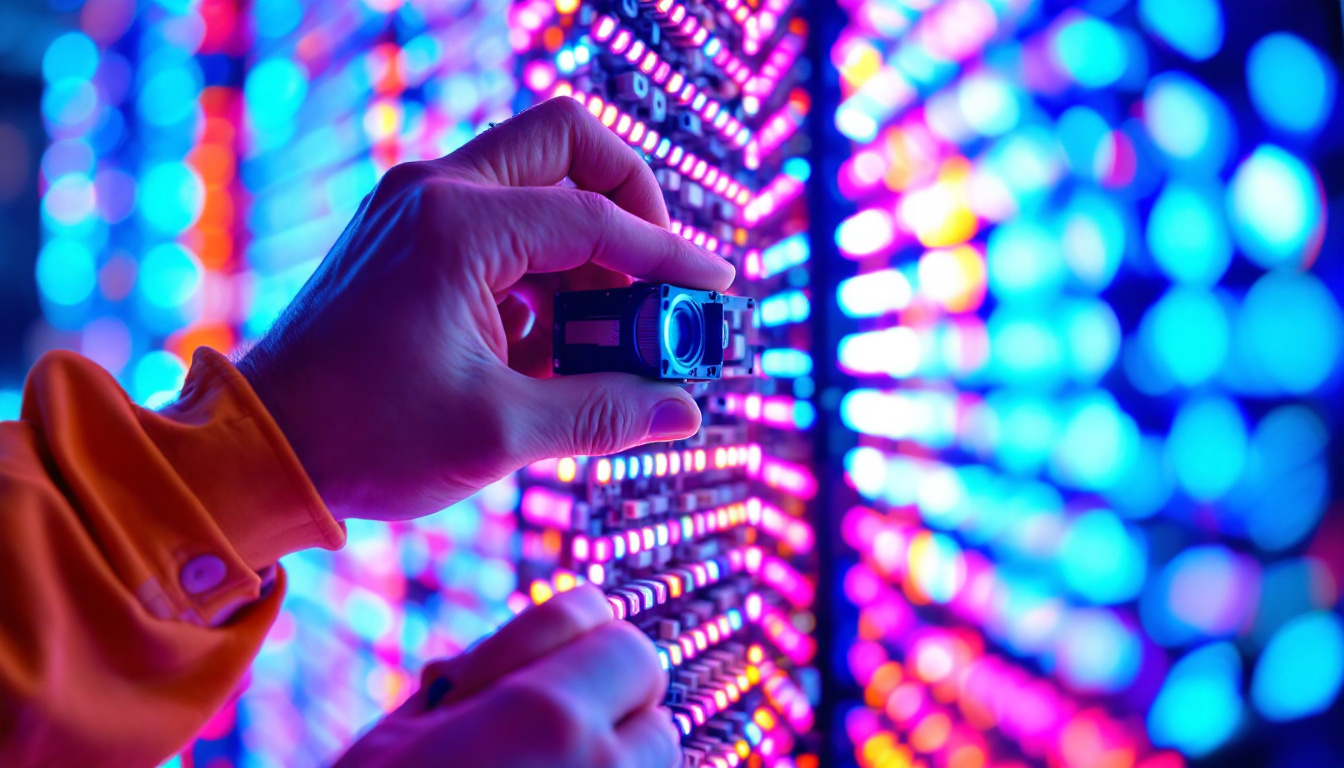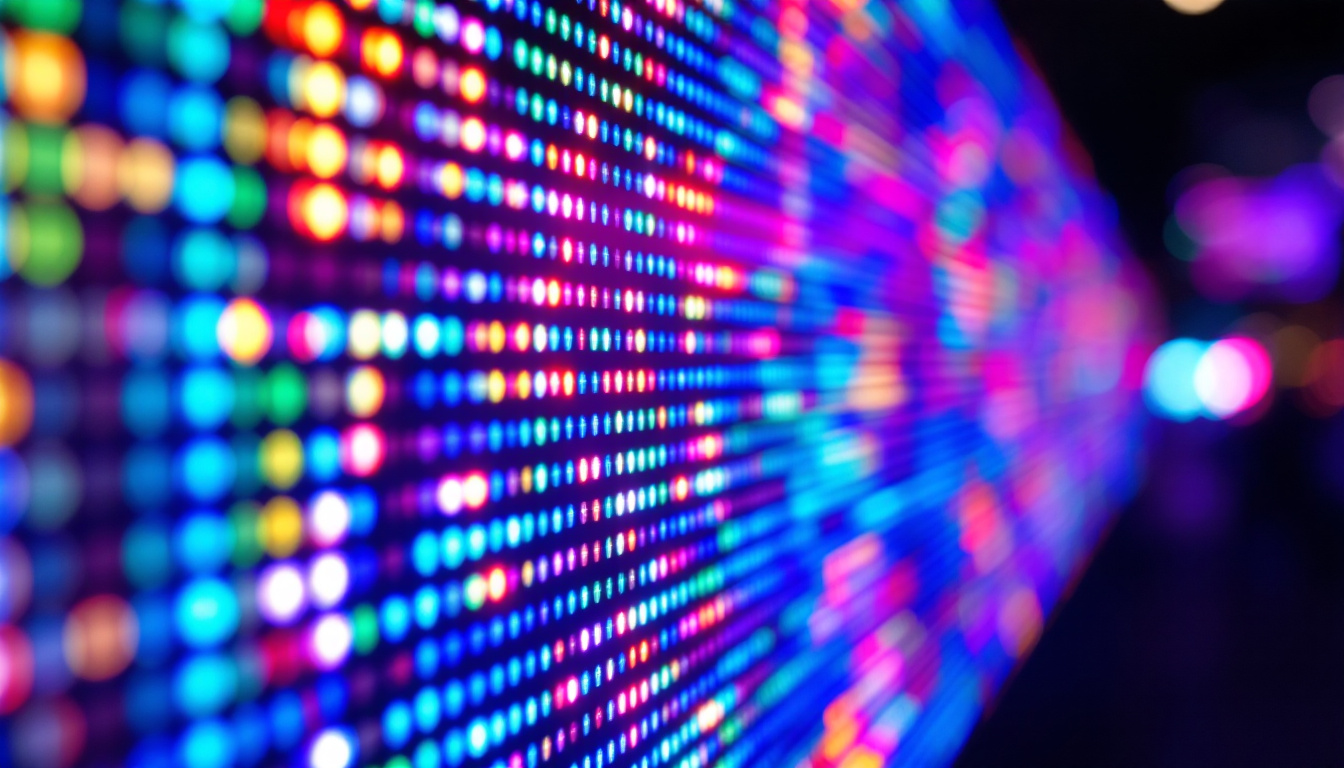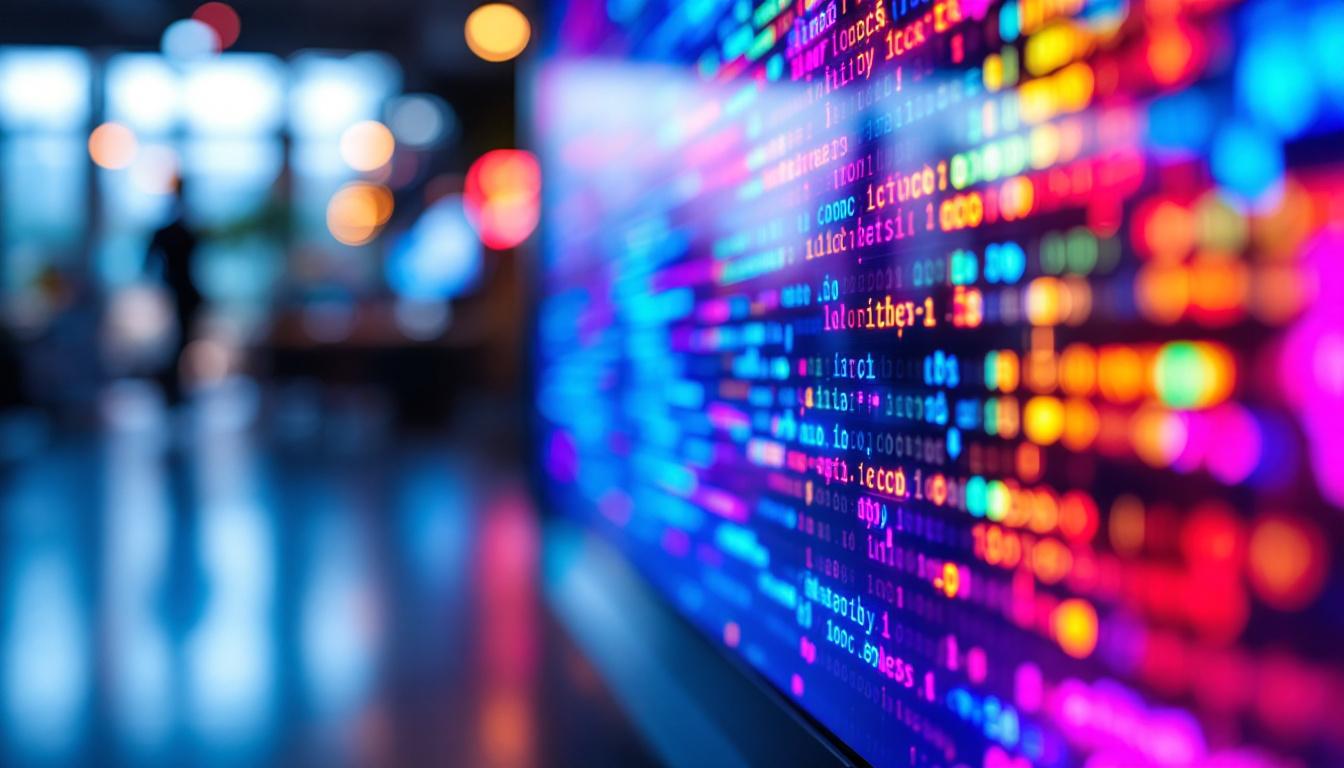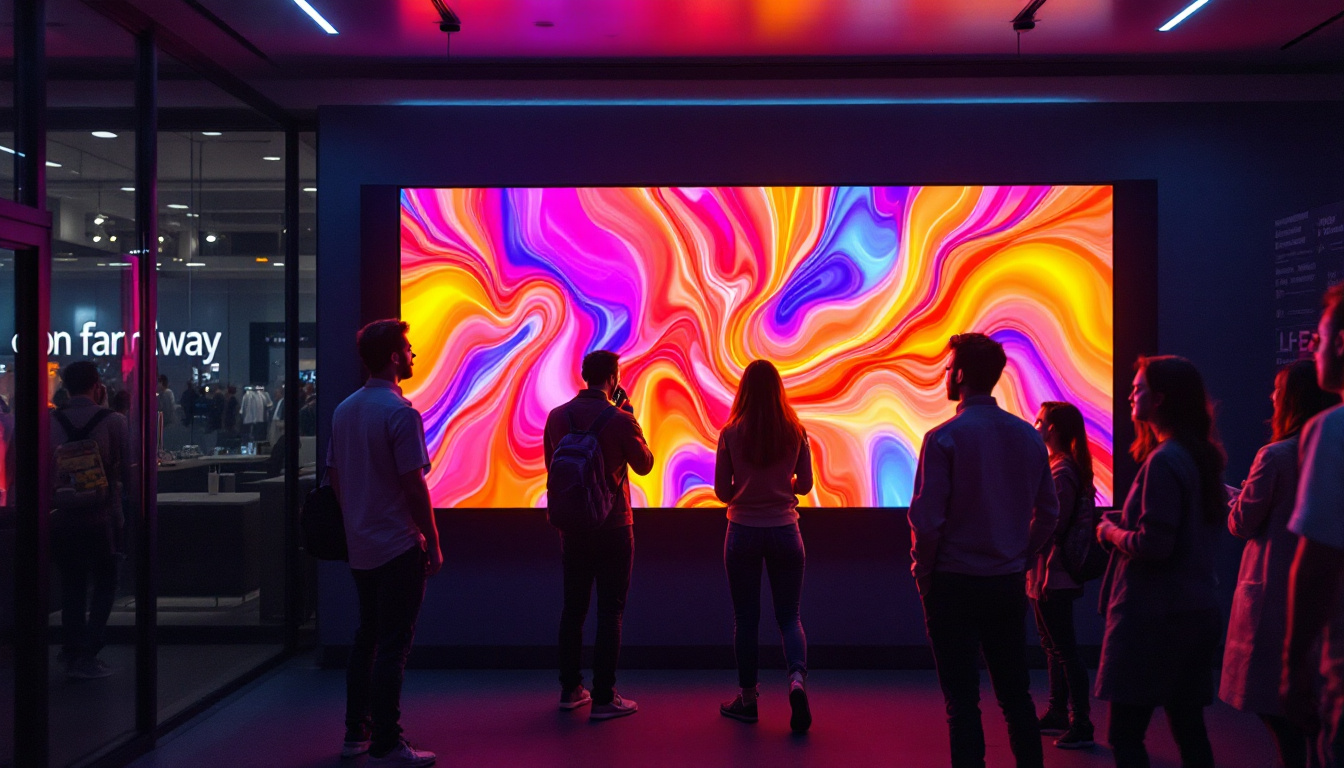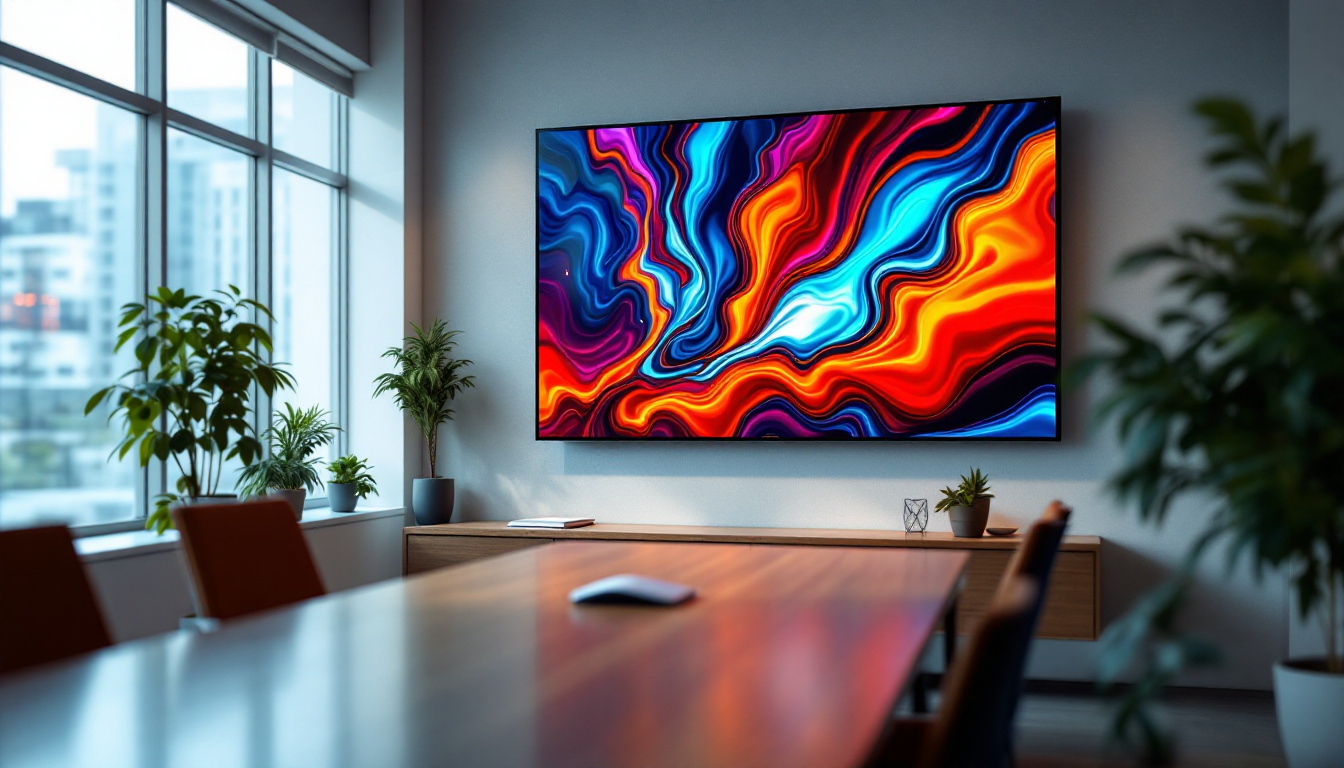In the digital age, LED displays have become a cornerstone of visual communication. From massive billboards to intimate indoor screens, these displays offer unparalleled brightness, clarity, and versatility. This article delves into the intricacies of LED technology, its applications, and the future of LED displays in various industries.
Understanding LED Technology
Light Emitting Diodes (LEDs) are semiconductor devices that convert electrical energy into light. This technology has revolutionized the way displays are designed and utilized across various platforms. The fundamental principle behind LED displays lies in the ability of these diodes to emit light when an electric current passes through them.
How LEDs Work
At the core of an LED is a semiconductor material, typically composed of gallium, arsenic, or phosphorous. When electrons move through this material, they recombine with electron holes, releasing energy in the form of photons—this is what creates light. The color of the light emitted depends on the energy bandgap of the semiconductor material used.
LEDs can be combined in various configurations to create displays of different sizes and resolutions. Each pixel in an LED display is made up of red, green, and blue (RGB) LEDs, which can be mixed in different intensities to produce a wide spectrum of colors. This RGB model is fundamental to the vibrant and dynamic visuals that LED displays are known for. Furthermore, advancements in technology have led to the development of white LEDs, which utilize a blue LED combined with a phosphor coating to emit a broad spectrum of white light. This innovation has opened up new avenues for applications in general lighting, providing energy-efficient alternatives to traditional incandescent bulbs.
Types of LED Displays
LED displays come in various types, each suited for specific applications. The most common types include:
- Direct View LED Displays: These are often used in outdoor advertising and large-scale installations, where high brightness and visibility are essential.
- LED Video Walls: Comprising multiple LED panels, these displays are used in concerts, sports events, and corporate settings to create a seamless visual experience.
- Backlit LED Displays: Common in televisions and monitors, these displays use LEDs to illuminate an LCD panel, providing enhanced brightness and contrast.
In addition to these common types, there are also specialized LED displays designed for niche markets. For instance, transparent LED displays are gaining popularity in retail environments, allowing customers to see products behind the screen while still delivering engaging advertisements. Similarly, flexible LED displays are being developed for innovative applications, such as curved screens that can fit into unconventional spaces, offering new possibilities for design and creativity. The versatility of LED technology continues to inspire advancements, making it a cornerstone of modern visual communication.
Applications of LED Displays
The versatility of LED displays allows them to be utilized in a wide array of environments. Their applications span various sectors, including advertising, entertainment, transportation, and education.
Advertising and Marketing
One of the most prominent uses of LED displays is in advertising. digital billboards and signage can capture attention more effectively than traditional static displays. The ability to change content quickly and easily allows businesses to adapt their messaging to different audiences or time slots.
Moreover, LED displays can be programmed to show dynamic content, such as videos or animations, which can engage viewers more effectively. This adaptability not only enhances visibility but also maximizes return on investment for advertisers. The integration of sensors and data analytics can further refine advertising strategies, allowing businesses to target specific demographics based on location, time of day, or even weather conditions. This level of customization ensures that the right message reaches the right audience at the right moment, significantly boosting campaign effectiveness.
Entertainment and Events
In the entertainment industry, LED displays play a crucial role in enhancing the audience experience. Concerts, festivals, and sporting events often utilize large LED screens to broadcast live footage, provide information, and create immersive environments.
These displays can be configured in various shapes and sizes, allowing for creative installations that complement the overall design of the event. The high refresh rates of LED technology ensure that visuals remain sharp and fluid, even during fast-paced performances. Furthermore, advancements in LED technology, such as flexible and transparent displays, are opening new avenues for artistic expression. Event organizers can create stunning visual backdrops that seamlessly blend with the surrounding environment, transforming ordinary spaces into extraordinary experiences. The ability to synchronize visuals with sound and lighting adds another layer of engagement, captivating audiences and leaving lasting impressions.
Transportation and Wayfinding
LED displays are increasingly being used in transportation hubs, such as airports and train stations, to provide real-time information to travelers. Flight schedules, train arrivals, and wayfinding directions can be displayed clearly and effectively, improving the overall travel experience.
Additionally, LED displays are utilized in public transport vehicles, such as buses and trams, to inform passengers of upcoming stops and service changes. This real-time communication is vital for efficient public transport systems. Beyond mere information dissemination, LED displays can also enhance safety by providing alerts and updates about delays or emergencies. The use of bright, high-contrast visuals ensures that important messages are easily visible, even in low-light conditions. Moreover, as cities continue to evolve, the implementation of smart LED signage integrated with mobile applications can provide personalized travel updates, further streamlining the commuting experience and fostering a more connected urban environment.
Advantages of LED Displays
The rise of LED displays can be attributed to their numerous advantages over traditional display technologies. These benefits make them a preferred choice for many applications.
Energy Efficiency
One of the most significant advantages of LED displays is their energy efficiency. Compared to traditional incandescent or fluorescent displays, LEDs consume significantly less power. This not only reduces operational costs but also contributes to sustainability efforts.
Moreover, LED technology generates less heat, which means less energy is required for cooling systems, further enhancing overall energy savings. In commercial settings, this translates to lower electricity bills and a reduced carbon footprint, making LED displays an environmentally friendly option. As businesses increasingly prioritize green initiatives, the adoption of LED technology aligns with their goals of reducing energy consumption and promoting eco-friendly practices.
Longevity and Durability
LED displays are known for their longevity. With a lifespan of up to 100,000 hours, they outlast many other display technologies. This durability makes them ideal for both indoor and outdoor applications, where exposure to the elements can lead to wear and tear.
Additionally, LED displays are more resistant to shock and vibration, making them suitable for dynamic environments such as concerts or sporting events. Their robust construction ensures that they can withstand harsh conditions, including extreme temperatures and moisture, which is crucial for outdoor installations. This resilience not only reduces the frequency of replacements but also minimizes maintenance costs, allowing businesses to allocate resources more effectively.
High Brightness and Contrast
LED displays offer superior brightness levels, making them easily visible even in direct sunlight. This characteristic is particularly beneficial for outdoor applications, where visibility is paramount.
Furthermore, the high contrast ratios of LED displays ensure that colors appear vibrant and details remain sharp, enhancing the overall viewing experience. This capability is especially important in advertising and promotional displays, where capturing the attention of passersby is essential. The enhanced clarity and vividness of the images displayed can significantly impact consumer engagement, leading to increased brand visibility and potentially higher sales. In addition, advancements in LED technology continue to improve color accuracy and uniformity, ensuring that the visual output meets the highest standards for professional applications, such as broadcasting and digital signage.
Challenges and Considerations
Despite their many advantages, LED displays are not without challenges. Understanding these challenges is crucial for making informed decisions about their use.
Cost Considerations
While the prices of LED technology have decreased over the years, initial investment costs can still be high, particularly for large-scale installations. Businesses must weigh the long-term benefits against the upfront costs to determine if LED displays are a viable option.
However, it is essential to consider the total cost of ownership, which includes energy savings and reduced maintenance costs over time. In many cases, the investment pays off in the long run.
Technical Expertise
Implementing LED displays often requires technical expertise, especially for installation and maintenance. Organizations may need to invest in training or hire specialized personnel to ensure that the displays function optimally.
Additionally, software and content management systems used to control LED displays can be complex, necessitating ongoing support and training for staff.
The Future of LED Displays
The future of LED displays looks promising, with ongoing advancements in technology and applications. As industries continue to evolve, so too will the role of LED displays in shaping communication and engagement.
Innovations in Technology
Emerging technologies, such as microLED and organic LED (OLED), are paving the way for even more advanced display solutions. MicroLED technology, in particular, offers the potential for higher resolutions and improved color accuracy, making it a game-changer in the display industry.
Furthermore, advancements in flexible LED technology are enabling the creation of displays that can be bent or shaped to fit various environments, opening up new possibilities for creative installations.
Integration with Smart Technologies
As the Internet of Things (IoT) continues to grow, LED displays are increasingly being integrated with smart technologies. This integration allows for real-time data sharing and interactive experiences, enhancing the overall functionality of displays.
For instance, smart LED displays can be programmed to change content based on environmental factors, such as weather conditions or audience demographics, creating a more personalized experience for viewers.
Conclusion
LED displays have transformed the landscape of visual communication, offering unparalleled brightness, energy efficiency, and versatility. From advertising to entertainment and transportation, their applications are vast and varied. While challenges exist, the benefits of LED technology often outweigh the drawbacks, making it a compelling choice for businesses and organizations.
As technology continues to evolve, the future of LED displays promises even greater innovations and capabilities. Embracing this technology not only enhances visibility and engagement but also positions organizations at the forefront of digital communication.
In a world where visual impact is paramount, LED displays stand out as a beacon of innovation, illuminating the path forward in the realm of digital displays.
Discover the Future of Visual Engagement with LumenMatrix
As you’ve seen, LED displays are at the forefront of digital innovation, offering dynamic and efficient solutions for every visual communication need. LumenMatrix stands as a beacon in this technologically advanced landscape, committed to revolutionizing the way brands connect with their audiences. Whether you’re looking to enhance your brand’s visibility with an Indoor LED Wall Display, captivate passersby with an Outdoor LED Wall Display, or create a unique experience with Custom LED Displays, LumenMatrix has the cutting-edge technology to bring your vision to life. Don’t miss the opportunity to elevate your visual impact—check out LumenMatrix LED Display Solutions today and join the revolution in visual communication.

